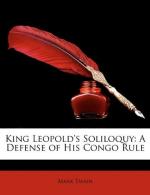|
This section contains 9,911 words (approx. 34 pages at 300 words per page) |

|
SOURCE: Hirsh, James. “Shakespeare's Soliloquies: The Representation of Speech.” In Shakespeare and the History of Soliloquies, pp. 119-98. Madison, N.J.: Fairleigh Dickinson University Press, 2003.
In the following excerpt, Hirsh claims that, in accordance with accepted dramatic convention, soliloquies in Shakespeare's plays are direct speech acts, not interior monologues. He discusses numerous soliloquies and asides that are overheard by other characters, either onstage or offstage, with particular reference to the ones in Romeo and Juliet.
Shakespeare employed the conventions that governed soliloquies in the late Renaissance and that were the focus of the preceding chapter. But Shakespeare's works require detailed special attention for several reasons. In the first place, he employed these conventions more imaginatively than any other dramatist, and so his use of the conventions is interesting for its own sake. Secondly, Shakespeare often used these conventions implicitly and in very complex ways. A clear understanding of...
|
This section contains 9,911 words (approx. 34 pages at 300 words per page) |

|


